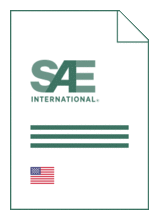
Standard [CURRENT]
SAE AIR 5784:2002-04-01
A Review of Literature on the Relationship Between Gas Turbine Engine Lubricants and Aircraft Cabin Air Quality
- Publication date
- 2002-04-01
- Original language
- English
- Pages
- 12
- Publication date
- 2002-04-01
- Original language
- English
- Pages
- 12
Product information on this site:
Quick delivery via download or delivery service
Buy securely with a credit card or pay upon receipt of invoice
All transactions are encrypted
Short description
There has been a recent upsurge in interest from the media concerning the quality of the environment within aircraft cabins and cockpits especially in the commercial world 1-4 . This has included (although by no means been limited to) the air quality, with particular reference to the alleged effects ofcontamination from the aircraft turbine lubricant. Possible exposure to 'organophosphates' (OPs) from the oil has raised special concerns from cabin crew. Such is the concern that government organisations around the world, including Australia, USA and UK, have set up committees to investigate the cabin air quality issue. Concern was also voiced in the aviation lubricants world at the way in which OP additives in turbine lubricants were being blamed in some reports for the symptoms being experienced by air crew and passengers. SAE Committee E-34 therefore decided that it should gather as much available information on the subject as possible. This would then enable E-34 to participate in debates on the issue and help prevent a potentially erroneous decision regarding the future of OP based additives in turbine lubricants. It would also serve as an indicator of where any additional work may be necessary to properly gauge the role that turbine lubricants, and OP additives, play in cabin air quality. This report summarises recent documentation from the literature on this subject. The contents do not necessarily represent the views of the SAE or any of the members of the study group who produced this review.
Loading recommended items...
Loading recommended items...
Loading recommended items...

